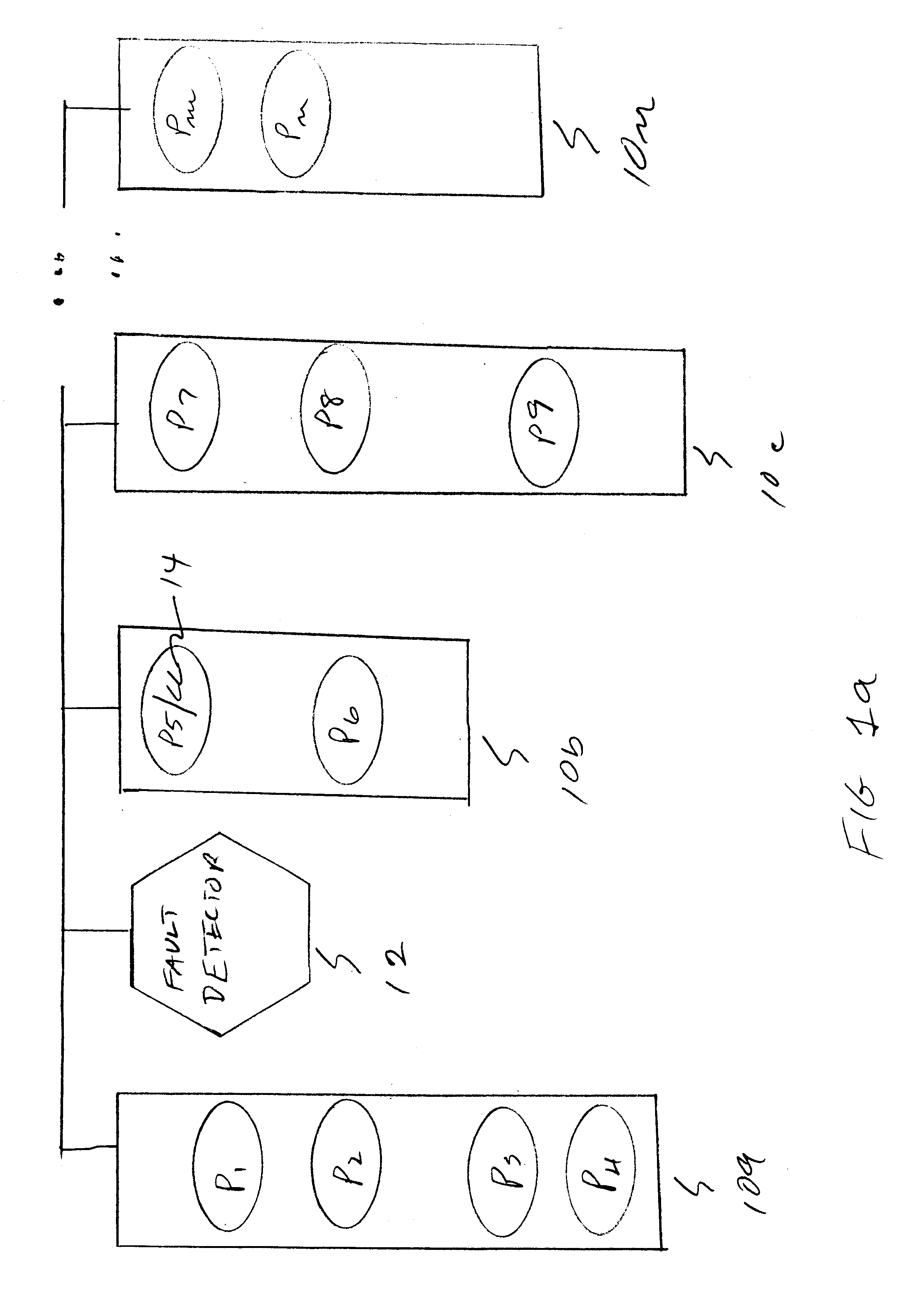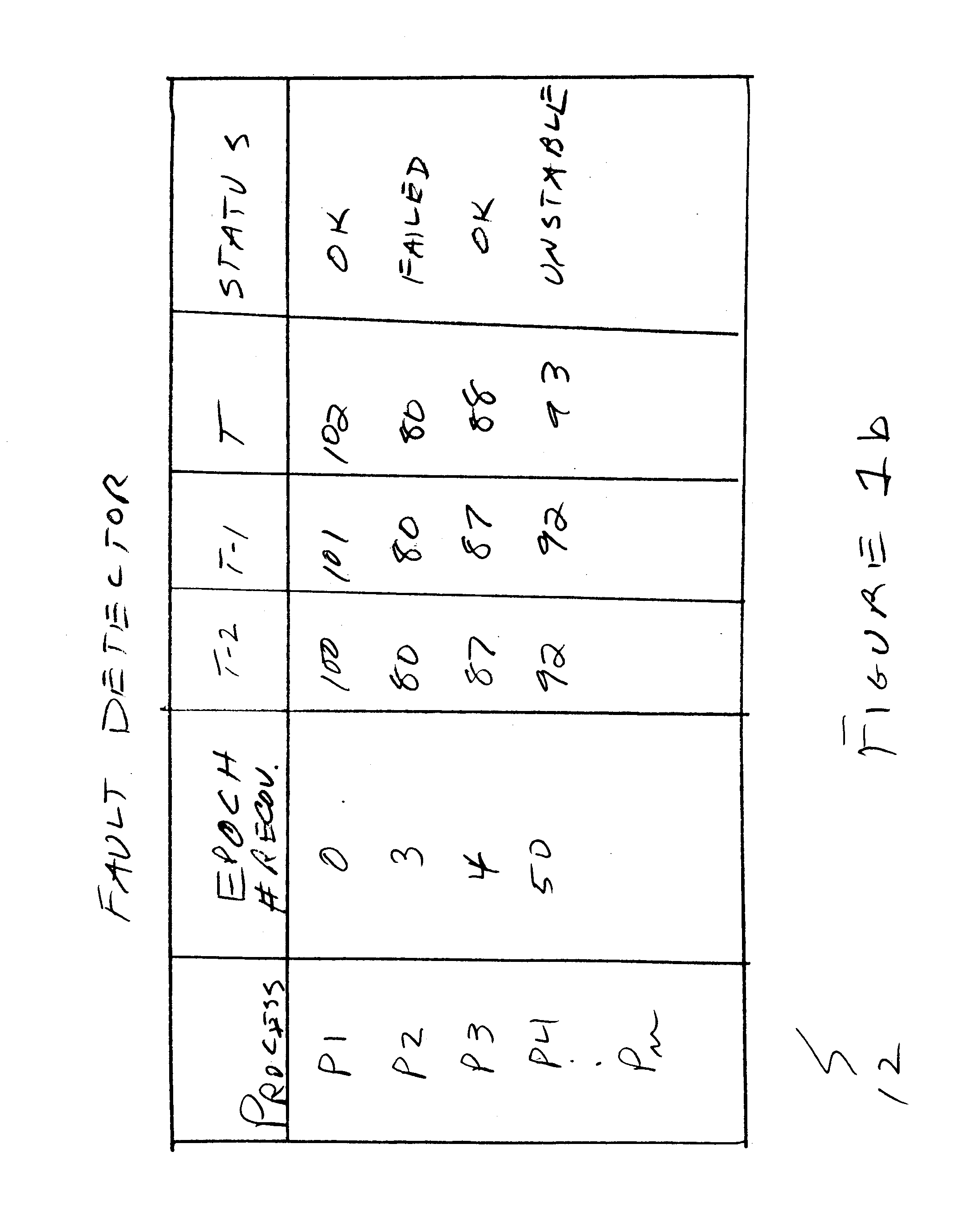Failure detector with consensus protocol
a failure detector and consensus protocol technology, applied in the field of failure detectors with consensus protocols, can solve the problems of crashing the system, failing to detect faulty components, and terminating software in error, etc., and achieves the effect of reducing the number of failures
- Summary
- Abstract
- Description
- Claims
- Application Information
AI Technical Summary
Problems solved by technology
Method used
Image
Examples
case 1
he coordinator of round r. Process p never decides, so in round r either p waits forever at line 18 or at line 28.
case 1.1
forever at line 18 It is now claimed that for every good process q, p eventually receives (r, estimate.sub.q, ts.sub.q, ESTIMATE) from q after p stabilizes. Then by the assumption that there is a majority of good processes, p does not wait forever at line 18--a contradiction.
To show the claim, note that since p waits forever at line 18 of round r, then ts.sub.p.noteq.r. Thus, p never updates ts.sub.p to r, and so p never updates estimate.sub.p in round r. By Lemma 52 (1), p never starts Phase NEWESTIMATE. So p never s-sends NEWESTIMATE messages in round r.
case 1.1.1
ts.sub.p.noteq.r, in round r, after p stabilizes and forks task participant, p s-sends (r, estimate.sub.p, ts.sub.p, ESTIMATE) to itself (line 34). Thus p receives this message after it stabilizes.
PUM
 Login to View More
Login to View More Abstract
Description
Claims
Application Information
 Login to View More
Login to View More - R&D
- Intellectual Property
- Life Sciences
- Materials
- Tech Scout
- Unparalleled Data Quality
- Higher Quality Content
- 60% Fewer Hallucinations
Browse by: Latest US Patents, China's latest patents, Technical Efficacy Thesaurus, Application Domain, Technology Topic, Popular Technical Reports.
© 2025 PatSnap. All rights reserved.Legal|Privacy policy|Modern Slavery Act Transparency Statement|Sitemap|About US| Contact US: help@patsnap.com



